#1940s military style
Explore tagged Tumblr posts
Text
‘Got your number!’
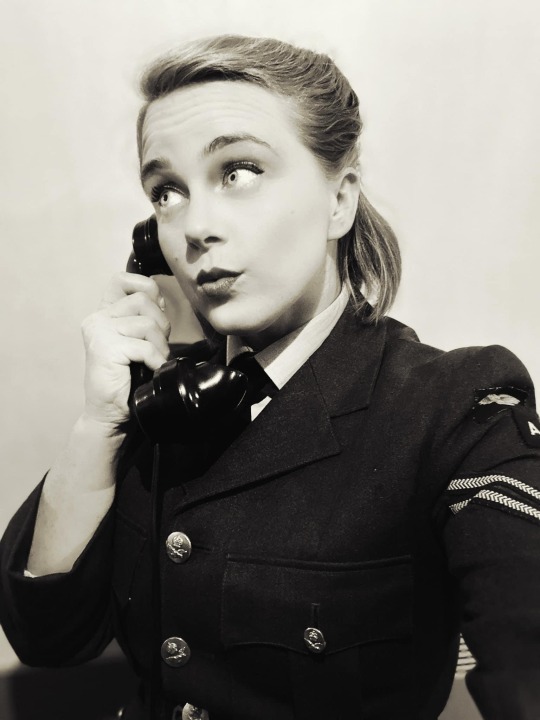
Artist/RAF Veteran: Miss Sarah-Jane
Source: IG (‘the_1940s_vocalist’)
#the_1940s_vocalist#Miss Sarah-Jane#pin up style#pin up model#RAF#WRAF#military women#Monochrome#retro#1940s#phone
26 notes
·
View notes
Text
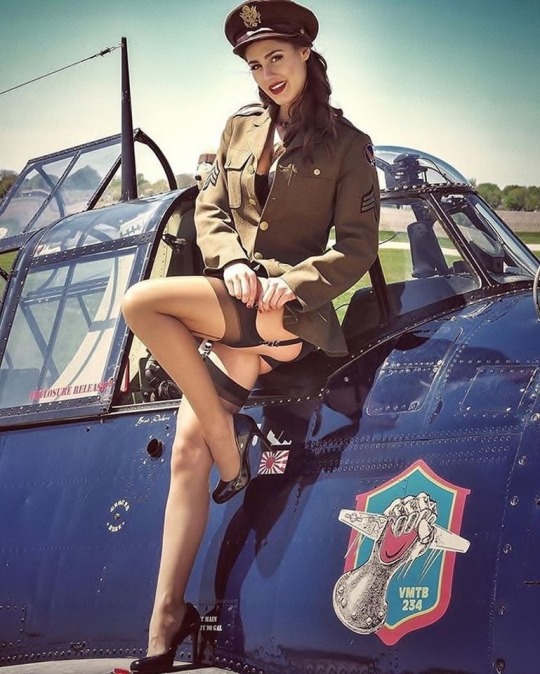
1940's style warbird pin-up with a TBM-3
#Warbird pin-up#Pin-up girl#1940's style#Pin-Up model#Aviation photography#Pin-Up photography#TBM-3Avengers#Military pin-up
146 notes
·
View notes
Text

Coast Guardsman “Bee” Vestal made a study of the white caps in and around Times Square, May 24, 1943.
Record Group 26: Records of the U.S. Coast Guard
Series: Photographs of Activities, Facilities, and Personalities
File Unit: Art by Vestal through Wood
Image description:
Cartoon showing head and shoulders of 15 men, each of whom is wearing a white Coast Guard or Navy uniform. Each man is also wearing a white “Dixie Cup” hat, each styled a different way. A caption below each sketch provides commentary on the cap’s style:
“Told me the durn things shrunk.” [Hat oversized]
“--didn’t tell me!” [Hat undersized]
“Back of the neck type (this fellow likes to see just how little it takes to keep hat on.)” [Hat on the back of the head]
“Just washed it and can’t do a thing with it.” [Hat with wavy brim]
“Salty! Proper vision means nothing to this guy.” [Hat tipped forward, almost over eyes]
“The platoon leader or dip in the center type.” [Hat brim has a bit of a point in front?]
“The tri-corner, or Paul Revere style.” [Hat brim formed into three points]
“There’s them wot likes wings.” [Hat brim formed into two points over ears]
“Starboard list. (Good if you have extra strong ears.)” [Hat tilted over one ear]
“The fore and aft, or gravy boat style.” [Hat brim formed into points at front and back]
“Lifeguard type. (Good for sunburned nose)” [Hat brim turned down over face]
“Well they told me to square it.” [Hat brim formed into four points]
“This lad likes the flow aft style, sometimes called cruiser stern style.” [Hat brim pulled into a point at the back]
“College Joe, or sports model.” [Hat brim folded down in front and up in back]
“And then there’s the guy who just doesn’t give a damn!” [Hat with wavy brim]
#archivesgov#May 24#1943#1940s#World War II#WWII#military#style#U.S. Coast Guard#U.S. Navy#dixie cup#hats#cartoon
166 notes
·
View notes
Text

#germany#wwii germany#ww2 germany#wwii#ww2#ww2 era#world war ii#world war 2#world war two#ww2 history#history#aesthetic#1940s#1940s fashion#1940s style#1930s#1930s fashion#1930s style#uniform#military#military history#uniforms#aesthetics
10 notes
·
View notes
Photo
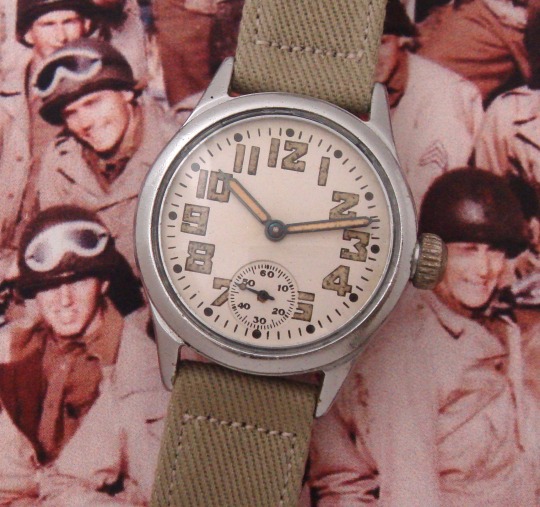
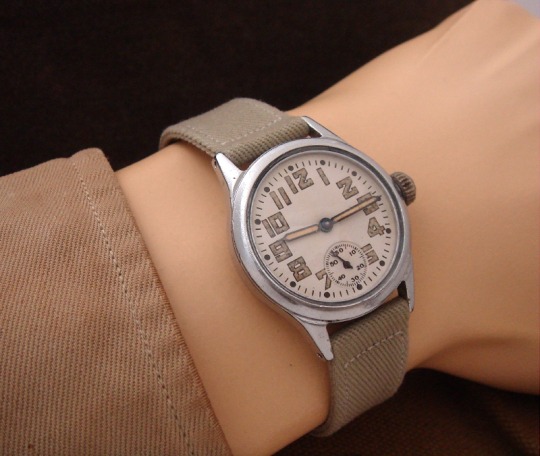
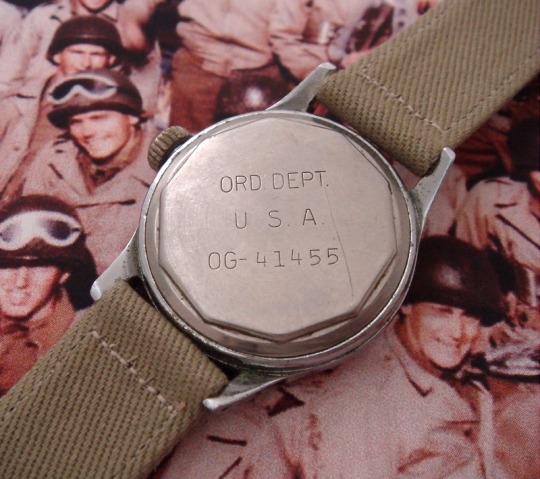

Excellent WWII era military wristwatch by Waltham. Completely original and restored, with a correctly recreated khaki strap produced exclusively for Strickland Vintage Watches. Circa 1942.
#wwiiwatch#wwiitimepiece#waltham watch#ordnance watch#waltham wristwatch#military watch#military ordnance#men's watches#men's style#men's fashion#1940s fashion#1940s vintage#timepiece#vintage timepiece#Strickland Vintage Watches#vintage fashion#true vintage#vintage lifestyle#dads watch#horology#horological finds#vintage horology#classic watch
21 notes
·
View notes
Text
The urge toward cosmopolitanism was a direct effect of the rise of the United States to world power: Americans were, it seemed, everywhere! At the close of World War II, the United States was the undisputed world power, the only major force left standing and with a booming wartime economy. The troops could have come home after the war, but instead they stayed on and built permanent bases, and were periodically replenished by new crops of American boys. The American project spread itself around the world through military occupation (West Germany, South Korea, Japan), war (Korea, Vietnam, Laos, Cambodia), and an archipelago of military bases that stretched from Micronesia to the Philippines to Puerto Rico. To complement this military success, a host of government-sponsored programs—Fulbright Fellowships, state-sponsored arts tours, Area Studies departments, federal grants for literary translation—were founded, many of them still in existence today and promoting an ethos of worldly “exchange.” The hope was to bring all the world to Americans, since Americans seemed to be bringing themselves to all the world. This was one of the few moments in American life when government policy was mirrored by a positive popular style, rather than, as in the 1930s or 1960s, darkly refracted through a dissident culture more vibrant and appealing. Another way of putting this is that not many citizens opposed American foreign policy in the 1940s and 1950s, and so the High Imperial Aesthetic thrived precisely because it did not have to compete with serious dissent. This was made possible, in part, by an insistence that the United States was spreading democracy rather than colonizing, which meant leaving behind the adamantly imperial jingoism of the earlier century for the more subtle propaganda of liberal cosmopolitanism. High Imperial Aesthetics emerged as a way to gloss over the dissonance between what was said and what was done—but also, to manage these tensions.
157 notes
·
View notes
Text
i’ve got this idea for a lovecraft style milex au. people keep comparing alex as a deer right? yeah.
the year is the 1940s. political tension is everywhere, the 2nd industrial revolution was already set to motion. cross-country railway is more prominent than ever, jobs are high, military calling is rising. miles kane was many such passenger of this railway, going back to his home town after a year in the big city of london.
the trains are slow and steam-powered; sounds of locomotive has now been miles' usual as he drifted to short naps. he was traveling alone and the journey was going to be long and scenic.
"can i get a cigarette?"
a sound voiced beside him as a man sat on the empty seat. he was young, with doe-like eyes, and a head tilt that made miles' stomach churn. not that he looked terrible; in fact, miles swallowed his lingering bits of homosexuality, in an era where it is frowned upon.
miles gives the man a cigarette. his name was alex, he'd introduced, and within a few days, he was a nice travel companion to miles.the train journey felt long. it stopped at every small town, towns that didn't sound real, towns that bury itself deep inside the woods.
no longer was the journey scenic, fog covered the train window in mystery. at some point miles realized, alex was the only person he sees in this train lately.no men asking for tickets, no women selling packets of nuts, nothing. just alex.
even if miles did see other passengers, he could've sworn they were translucent. like ghosts and phantoms that haunted this waking nightmare.he'd realized then that he knew nothing about alex. about his destination. he didn't even know where they were.
yet every time he'd tried asking, his doe-like eyes captivated him. it was strange. his shadow seemed to move itself. and sometimes miles could see a fleeting trick of light—antlers.
one moment, miles found an abandoned newspaper. it was strange, he thought. the train hasn't stopped in what felt like weeks.
then there it was, headlined: miles' train had apparently gone missing. decades ago.
and alex shrugged, eyes glinting in mischief. the light reflected under the light. like a deer's.
#if enough people like this i might write this tbh#I love lovecraftian horror#Obviously there's gonna be some kind of romance here#sighhhh its a curse#tlsp#milex#milex au#alex turner#miles kane#arctic monkeys#the last shadow puppets
22 notes
·
View notes
Photo
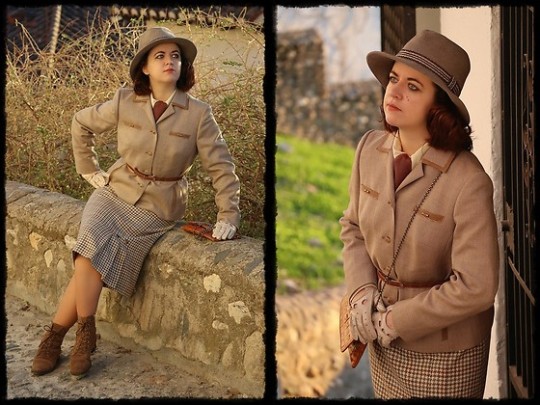
Archive of 2022-2023: Warm winter outfit in style of 1940s
#vintage#vintage photography#vintage fashion#vintage style#vintage hat#retro fashion#retro style#retro dress#retro look#1940s fashion#1940s vintage#1940s style#1940s women#1940s military style#Delmod International#Delmod International Bekleidungsindustrie GmbH & Co. Hanse-Kleidung KG#Delmod International Bekleidungsindustrie GmbH#Hämmerle Creation#Canda for C & A#Canda#C & A#Canda International GmbH#T. M. Lewin#vintage fedora hat#Etui Bags London#peccary gloves#Alexandrina Wasiliewa-Szylowska#alexandrina wasiliewa-szyłowska#dannais#Dannais dde Daneann
1 note
·
View note
Text
‘Pennsylvania 6-5000!’
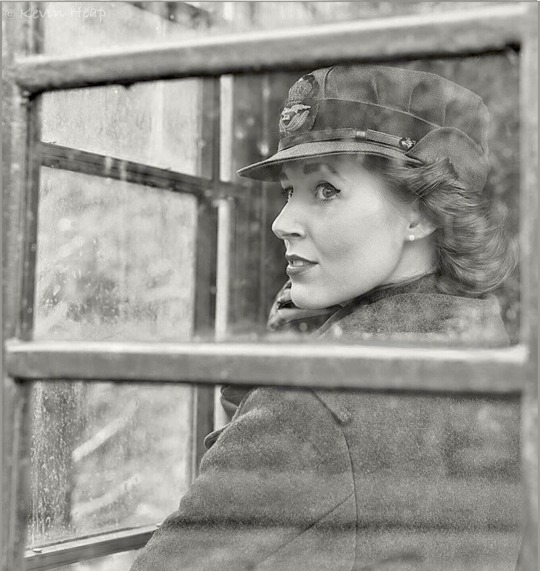
Artist: Miss Beth Belle (IG)
Photographer: Kevin Heap
#pin up style#pin up model#Miss Beth Belle#Kevin Heap#Phone#pinup#retro#1940s#RAF#WRAF#military women#monochrome
30 notes
·
View notes
Text
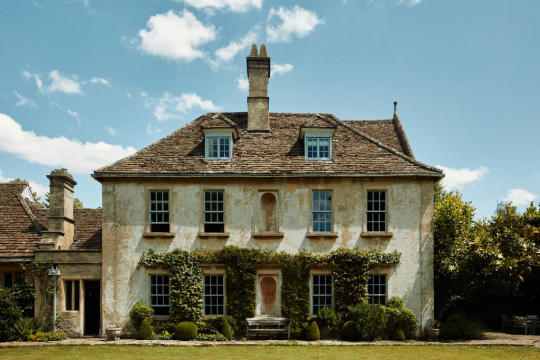
Okay, let's get a little spooky with the early 18th century Wingfield House, Wingfield, Wiltshire, UK. The 4bd, 3ba home underwent significant expansion in the late 19th century when there was a demand for additional entertaining rooms and separate wings for bachelors and children. During WWI, the manor was used as a military hospital. In the 1940s, the property was divided into four separate dwellings. £1.250M / $1.530M

The newer portion of the house was done in Gothic Revival style, while the original is Georgian.


The home is accessed via an enclosed communal courtyard and a Gothic revival doorway. This opens to a double-height entrance hall paved with York flagstones.

The impressive ballroom off the main hall features a timber barrel-vaulted ceiling.

Tudor-arched fireplace has the Caillard family arms (owners that renovated the home after WWI) above the arch, along with a French motto on top of the fireplace. Note the large Inglenook and window openings in the fireplace itself.

39 ft library hall, (and the oldest part of the house), with six floor-to-ceiling oak bookshelves, giving both open and closed storage options.
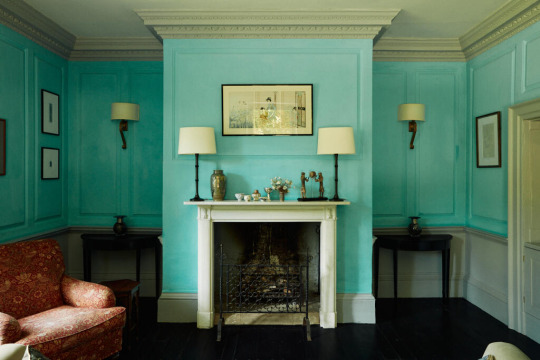
Drawing room with early Georgian plaster is finished in a vibrant shade of turquoise and has a white marble fireplace dating back to 1760 that came from the Circus building in Bath.


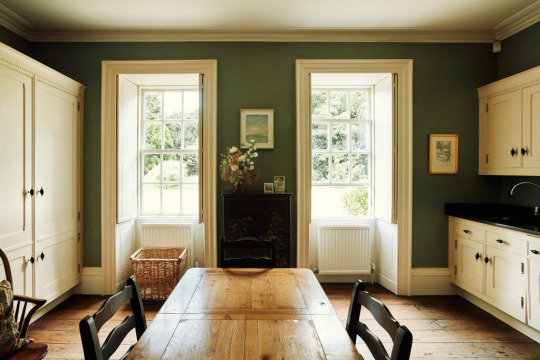
Large kitchen and dining area with cream-painted cabinetry. Wide, stripped timber flooring and an original limestone fireplace create focal points in the room.


Ascending to the first floor via a fine early Georgian staircase with waist-high paneling and a delicate domed skylight above is the remarkable primary bedroom suite set in the corner.
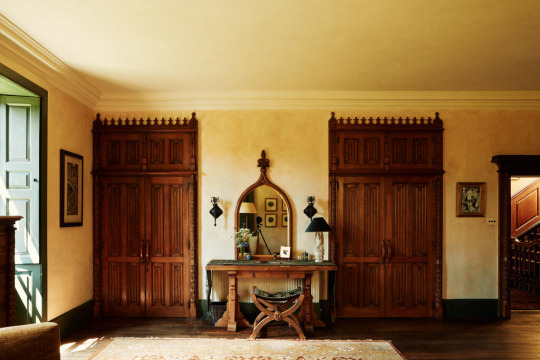
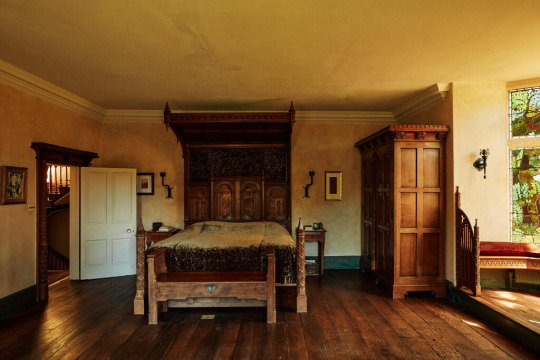

This space was meticulously crafted by the current owners including Gothic-inspired doors and built-in seating in a contemporary oriel window inspired by the Pre-Raphaelite movement.


A modern marble shower room cleverly concealed behind double wardrobe doors. That's how ya do it- this is a great idea.

Secondary bedroom adjacent to the primary has a beautiful built-in closet and window seats.

On the floor above is a bedroom under the eaves with thick original beams.

What a magnificent home- look at the architecture. Lovely pond on the property, too.

Horticulturist's delight is a modern greenhouse on the property.
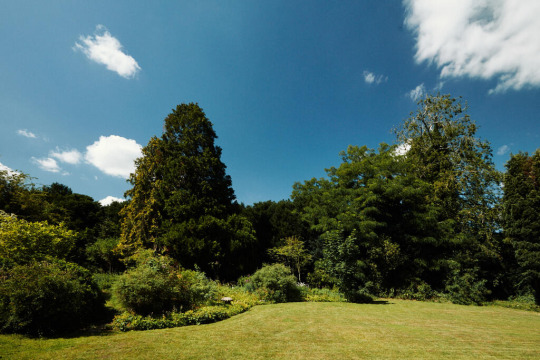
There's a plethora of different plant and tree species on the property, all meticulously maintained.
#historic home UK#georgian architecture#greek revival architecture#old house dreams#houses#house tours#home tour
190 notes
·
View notes
Text
Character Profile: Candice Ann-Marie Montgomery (Candy)

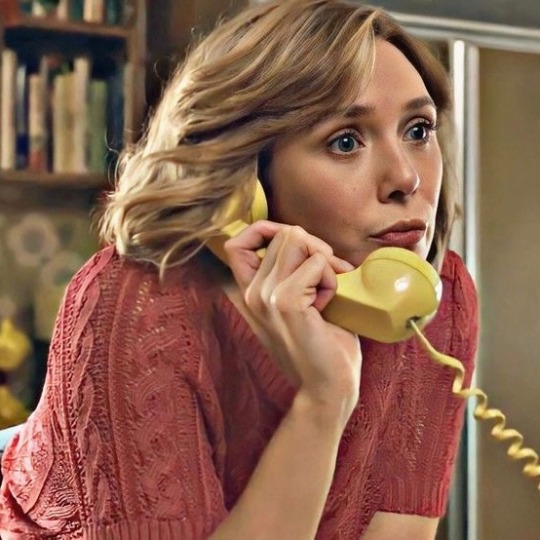
Full Name: Candice "Ann-Marie" Montgomery
Nickname: Candy
Age: 35 years old
Eye Color: Green
Hair Color: Chestnut brown, often styled in loose waves or elegant updos.
Residence: Warren Valley (Trick R Treat universe)
Occupation: Owner Of "Candy's Corner" A boutique shop in Warren Valley.
Family Background:
Mother: Eleanor Montgomery, a dedicated homemaker who infused warmth and creativity into her family's life. Eleanor encouraged Candy's love for fashion and instilled the importance of self-expression through clothing and personal style.
Father: Robert Montgomery, a decorated veteran of both World War I and World War II, who returned home with a deep sense of duty and responsibility. His strong work ethic and focus on discipline influenced Candy's determination to succeed. However, his experiences in war left him emotionally scarred, leading to periods of withdrawal and difficulty in expressing his feelings, which strained their family dynamic. Despite the pride associated with his military accolades, the toll of his service created a complex relationship for Candy, as she struggled to reconcile the heroic image with the reality of his struggles with PTSD.
Siblings: Candy is an only child, which fueled her ambition to excel and fulfill her parents’ high expectations. Growing up without siblings allowed her to develop independence early on, often planning her own activities and social events.
Marital Status: Widowed
Late Husband: Nathaniel "Nate" Carter, a kind-hearted man who supported Candy's dreams. They were married for four years before his untimely passing due to an unexpected illness. Candy often reminisces about their adventures together, and Nate’s encouragement helped her build the confidence to pursue her aspirations.
Would-Be Child: They were expecting their first child, whom they named Lily, but Candy suffered a miscarriage during the first trimester. The loss deeply affected her, instilling a sense of fragility about life that she channels into her work and relationships.
### Backstory:
Candy grew up in a tight-knit suburban community in the late 1940s, where individuality and creativity were cherished. Heavily influenced by her mother’s role as a homemaker, she learned early on how to throw vibrant gatherings and events that brought people together. Candy's childhood was filled with color and warmth, as her mother often organized neighborhood events and holiday celebrations, cultivating a sense of community.
Her father's experience as a decorated veteran of two world wars instilled in her a sense of respect for duty and service. However, his service left him with deep emotional scars, leading to difficulties with intimacy and emotional expression. While she admired his bravery and accomplishments, she often felt the weight of unspoken expectations and the burden of his unresolved trauma. As a child, she found herself tiptoeing around his moods, desperately wanting to support him but often feeling helpless to alleviate his pain. This dynamic taught her resilience but also instilled a sense of responsibility and fear of vulnerability.
After high school, Candy attended a local community college, where she studied fashion design and business management. Her education sparked a passion for style and entrepreneurship, leading her to envision a future where she could combine both. Upon graduating, she worked in various retail settings, honing her skills in customer service and fashion merchandising. Her outgoing personality and flair for connecting with people made her a natural fit in these roles.
Candy and Nate decided to travel together, exploring America’s vibrant culture and fashion scene. Their adventures deepened their bond and ignited Candy’s desire to create a space that reflected her vision of community and creativity. Tragedy struck when Nate fell ill. His unexpected passing was a devastating blow, leaving Candy grappling with her grief. The emotional toll was compounded by the loss of their unborn child, an experience that shattered her dreams of family and stability. Yet, through the darkness, she resolved to honor Nate’s memory by pursuing her dreams.
### Personality:
Candy is outgoing and friendly, with an innate ability to make people feel at ease. She thrives in social situations, often acting as a mediator and organizer among her friends. Her life experiences have made her empathetic and emotionally aware, qualities that draw others to her. Despite her cheerful demeanor, she is a planner at heart—meticulously organizing her shop’s events and always keeping a detailed calendar.
Candy’s resilience shines through in her determination to succeed despite personal tragedy. She uses her pain as motivation, channeling it into her work and community involvement. Her shop serves as a safe haven for those looking to express themselves, and she approaches every customer interaction with kindness and understanding, hoping to uplift others who may be going through similar struggles.
### Goals and Aspirations:
Professional: To expand her shop into a well-known destination for fashion enthusiasts, offering unique pieces and community events that inspire creativity and connection.
Personal: To heal from her past losses while finding ways to keep Nate’s memory alive. She dreams of one day starting a family again when she feels ready, nurturing her own legacy and possibly naming a future child after Lily.
### Conclusion:
Candy’s story is one of resilience, creativity, and connection. She embodies the spirit of a social butterfly, using her charm and planning skills to create a welcoming environment for others. Her journey from grief to self-motivation illustrates her strength and commitment to living life to the fullest, making her a beloved figure in her new community.
### About "Candy's Corner"
In Warren Valley, within the Trick 'r Treat universe, Candy currently owns and operates a charming boutique called "Candy's Corner." The shop specializes in unique, handmade clothing and accessories, embodying her flair for fashion and creativity.
### Details about Candy's Corner:
Theme: The boutique features a whimsical and nostalgic aesthetic, blending 1970s styles with seasonal decorations, particularly for Halloween. The shop transforms into a festive haven during the fall season, showcasing costumes, spooky decorations, and autumn-themed clothing.
Community Hub: Beyond being a retail space, Candy's Corner serves as a social hub for the community. Candy often hosts events, such as crafting nights, fashion shows, and seasonal celebrations, where locals can come together to share ideas and support each other.
Focus on Sustainability: Candy is passionate about sustainability and often sources materials from local vendors, promoting eco-friendly fashion. This aligns with her values of community support and responsible living.
Mentorship: She also takes on a mentorship role for young aspiring designers and seamstresses in the area, encouraging them to express themselves through fashion and creativity.
### Conclusion:
Overall, Candy's Corner reflects her vibrant personality, love for fashion, and dedication to building connections within Warren Valley, making it a beloved establishment in the town.
#candy montgomery x reader#wanda maximoff x reader#mcu wanda#wanda x reader#elizabeth olsen#wanda maximoff#candice montgomery x reader
26 notes
·
View notes
Text

I got this ask on main but thought I'd pick it up here, my comics history/fashion ramble blog. I'd been wondering this exact same thing recently, and Google initially wasn't much help—Rocketeer replica jackets describe themselves only as "Rocketeer jackets" and the one Lobster Johnson cosplay thread just suggested ordering one of those.

The most curious part is the double seam and horizonal row of buttons that mark out the entire front as possibly being an unbuttonable "bib", like a plastron front. (Please don't ask how late in the game I worked out that "plastron" is the right word for that.)
The closest genuine Golden Age example of a plastron jacket I found was the military tunic style uniform of Blackhawk, created in 1941.

(Pics from the '52 movie serial (right) really show how awkward it is to combine open lapels + plastron. On a double breasted coat, that chest panel IS the bottom lapel, folded shut.)
Here's the thing: This outfit mirrors that of the Nazi ace pilot he fights in the origin issue, von Tepp (middle). And compare further to the far right: real life WWI flying ace Manfred von Richthofen, AKA the Red Baron, in imperial German Uhlan (lance cavalry) uniform.
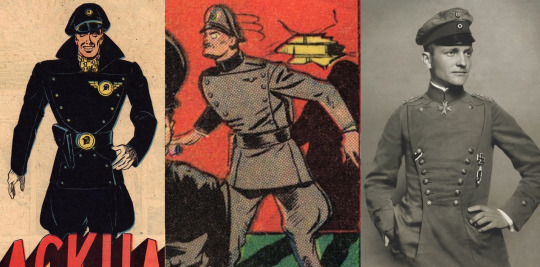
"The Germans had designed such great costumes, we decided to use them ourselves," co-creator Cuidera is quoted as saying in Steranko's History of Comics, which (more dubiously, in my opinion) compares the look to the Gestapo or SS. Breeches or jodhpurs weren't strictly a Nazi thing at the time, but they do add to the overall effect.
Compare two other military tunic themed costumes from 1940, on Captain Marvel and Bucky Barnes. These are asymmetrically buttoned, and switch to a more classic circus strongman look below the waist.

But somewhere around 1975, with the Invaders book, Bucky gets a buttoned bib! There's something infectious about it—the symmetry, maybe. (Even re: the characters we started with; Mignola didn't draw Lobster Johnson with buttons down the right side, but every artist after does. And Spider-Noir wore a sweater under his coat until Shattered Dimensions introduced the double-breasted vest.)
If it didn't reach his belt, Barnes' button-on front + shirt collar combo would resemble a bib-front western shirt, like the one that became the Rawhide Kid's signature look in '56. (Or Texas Twister's in '76.)
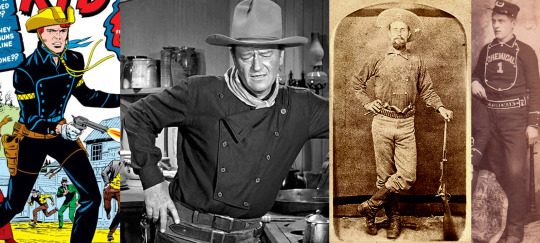
This shirt entered the old-West-obsessed public imagination in the 1940s/50s largely because John Wayne wore it in several cowboy movies. In reality it was rare among cowboys, more common with firefighters and civil war era militia.
Military tunics, Western shirts, alright, but does anything match the style and material and era, or are these jackets a total anachronism? I tried looking into 1930s leather flight jackets and was surprised when the closest-looking results were marked as Luftwaffe.
It took me a bit to work out why: USAF and RAF issued standard flight jackets with a center closure. The Luftwaffe instead let their pilots buy non-standardized ones. The 'weird' double-breasted black German flight jackets were in fact fairly normal (but repurposed) motorcycle racing jackets.
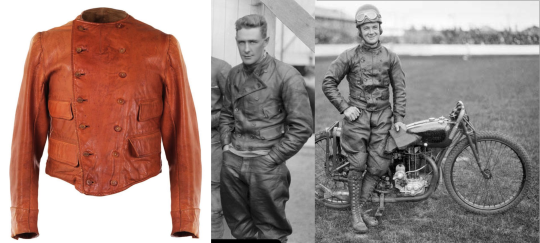
Far left is an English biker's jacket that dates back to the 1920s. Even without the bib, this may be as close as you'll get to an authentic Rocketeer. The jodhpurs were pretty common to complete the look. (What was an early motorcycle anyways, if not a weird metal horse?) The first biker jacket with the now iconic off-center diagonal zip was designed in America in 1928 and yet as far as I can tell, not a single actual pre-war pulp hero wore one.
The greatest weakness of this post is that I haven't been able to find any of these artists' notes on how, exactly, they arrived at similar versions of this iconic Pulp Front Panel Jacket. I'm sure I've missed some things. But as far as I can tell, this jacket is an odd bit of convergent stylistic evolution from the above influences that's picked up enough momentum to now be self-perpetuating.
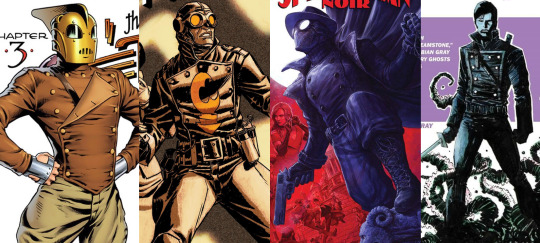
The problem with pulp heroes is that for the most part, they just wore clothes. The appeal of this jacket is actually very similar to what the 1940s thought the appeal of the bib-front shirt in westerns was: It's alien enough to feel "old". It looks like something invented before zippers or synthetic fabrics. It looks formal and militant but also renegade, rebellious. It also looks a little mad-sciencey*. It's a costume, but you can nearly fool yourself into thinking the past was weird enough that you could find something this cool on the rack.
If I wanted to end on some grand point, I could try to argue that there's a thematic throughline between fascist fashion, John Wayne movies, and throwback pulp. A manufactured aesthetic valorizing the violence of a fictional golden age... but I think the noir stylings of the post-Rocketeer comics in this lineup mean that, at least on some level, they know the "good guys" didn't dress like this.
*If I had another couple weeks of time to burn, I'd try to trace the visual history of the Howie coat in popular culture and investigate its possible connections to this. Alas, I do actually have a life.
#thank you for reading. also don't read golden age blackhawks the racism is awful even by era standards.#comics history#costume taxonomy#<- forgot I had that tag.#not to be like ''in MY favorite comics...'' again but may I point out that Hellboy and Robo and Tom Strong just wear... clothes#like. yknow. A pulp series that had confidence in itself rather than trying to cosplay as eras it thinks were cooler might do-#[I am yanked offstage before I can restart that rant]#the rocketeer
143 notes
·
View notes
Photo

WWII Hamilton Watch ad featuring one of the best-known contributions to the war effort, the D37 "Bomber Timer."
#hamilton watches#hamilton watch company#men's watches#men's vintage watches#vintage watches#military watches#military timepiece#timepiece#vintage timepiece#classic watches#wrist art#true vintage#men's vintage fashion#1940s fashion#1940s style#WWII watches#ww11 style#horological machines#vintage horology
3 notes
·
View notes
Photo
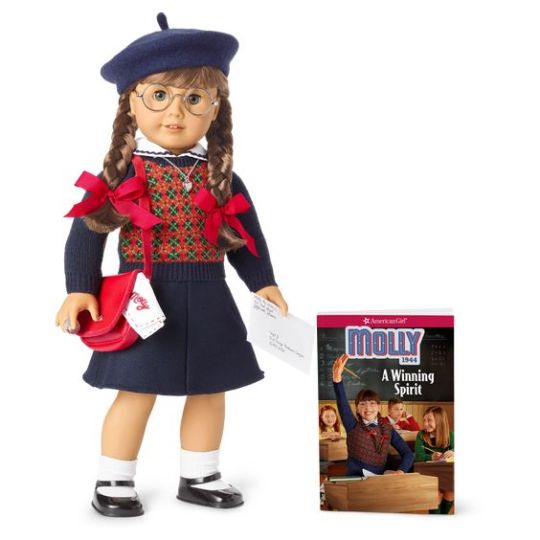
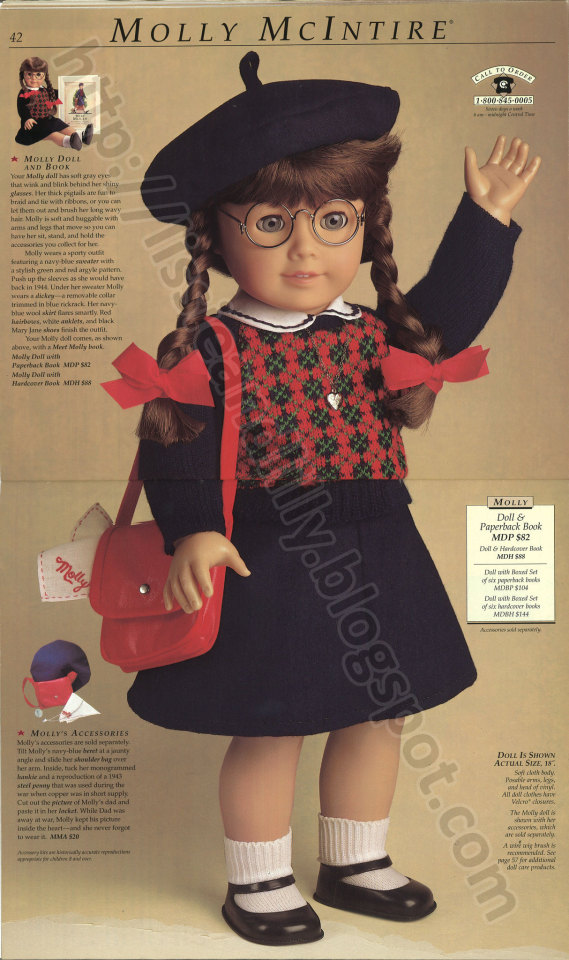
Apparently, Molly is low-key a major gay icon, and honestly, I get it. After all, Molly did *really* like her pretty teacher, Miss Campbell. If you think about it, it makes sense that lot of future lesbians would absolutely love Molly. Most dolls in the 90s were hyper-feminine princess dolls, and Molly was... not. I’d imagine the market for girls who want to play with dolls that aren’t pretty pink princesses is pretty large and the supply is pretty small. Just like there’s plenty of boys out there who want to play with something other than GI Joes. Molly (and AG in general) fits neatly into that market, which I’m sure is why she was so successful.
Last year, with its re-launch of the classic dolls, AG put a post on it’s instagram, “To all the Molly girls in the world, we see you and celebrate you,” which a lot of folks on Twitter took to see as confirmation that Molly was gay. When asked if they just outed Molly, AG gave a very non-committal reply. AG has always had a distinctly feminist slant, but it’s only ever toed the line of actually being LGBT inclusive. So far the only actual inclusion we’ve seen from them is a Girl of the Year with a pair of gay aunts. Even that tiny whiff of queerness was enough to set off a frothing horde of angry conservative moms screaming for a boycott. Since Mattell is only motivated by profit, I doubt we’ll get more representation any time soon, but we can dream.
Anyway, World War II was pretty gay to begin with.


A lot of historians point to WW2 as the starting point of the modern gay rights movement because before it, you had very many people living on isolated farms and never going very far from home in their lifetimes. With mass recruitment of men into the military, gay servicemen were able to find other men like themselves and build a community. It was much the same way for women who went to work in factories, joined the WAC or WAVES, and joined women’s baseball leagues. That’s right, the league of their own was gay as FUCK.
As far as Molly’s fashion goes, I love her lack of pink. I’m glad there’s a doll out there that isn’t hyper-gendered, and I wish there were more dolls like her out there.
With sweaters coming into fashion in the 1920s and 30s, the sweaters of the 40s started to see more complex and colorful knits coming into style.
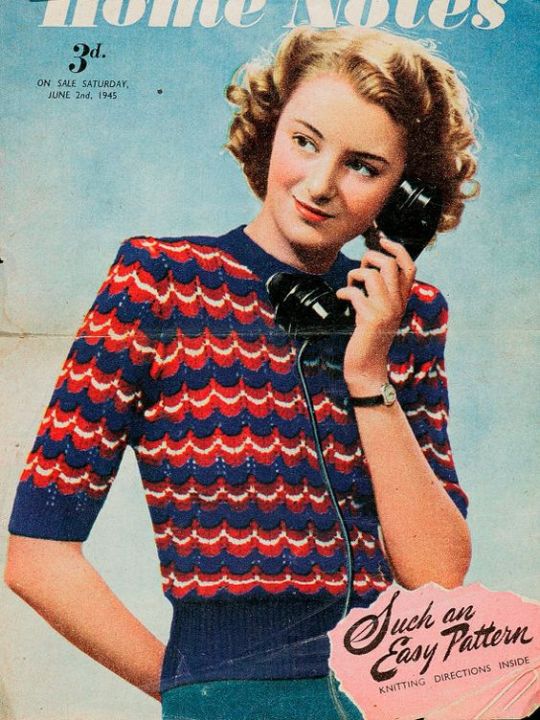
Much of the fashion of this era was dominated by frugality. Europe’s couture houses were shut down, and fabric was rationed. Hems were shortened and baggy cuts and useless frills were done away with. Britain introduced the “Utility Scheme” which hired designers to make chic ensembles using as few resources as possible. Because of this, separates and outfits that could be made with scraps of fabric were very popular, and at-home knitting and sewing continued to be highly popular.
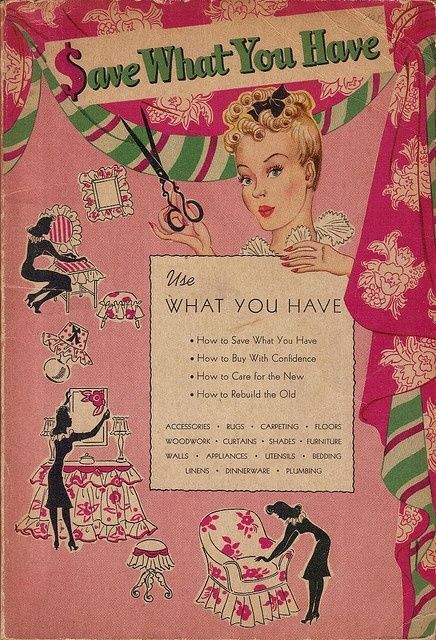
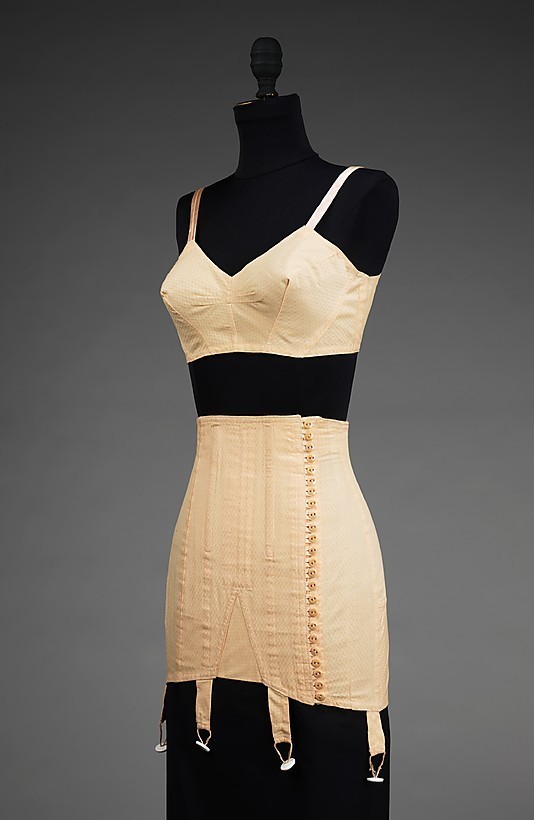
“After the United States entered World War II in 1941, companies began to experiment with various materials in anticipation of rationing and shortages. This example is a prototype from Nina-Fay Foundations, which uses plastic for closures and stays instead of the usual metal. Although metal was not ultimately rationed, the company was experimenting with alternatives to metal zippers and hooks in the event that it was needed for the war effort.”
(The Met Museum)
Women were taking men’s jobs and taking on masculine roles
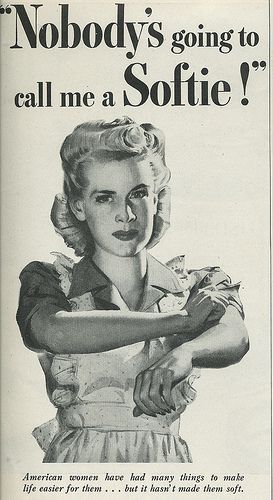
But they were still expected to maintain a certain level of femininity, “To give our boys something to fight for.”
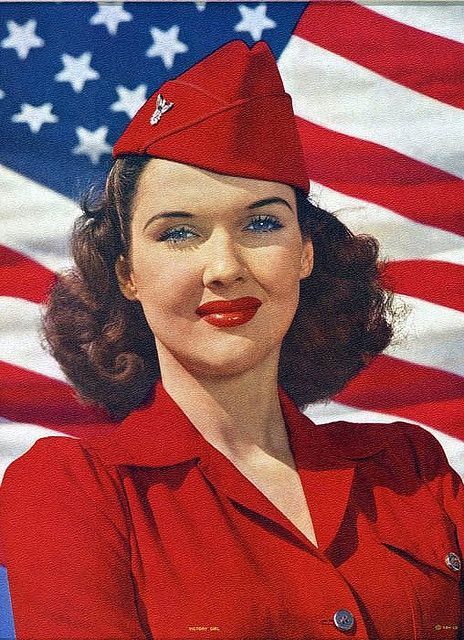
Because of all of this, the gender politics of the 1940s are really complicated and interesting.
301 notes
·
View notes
Text
Russian forces on Oct. 17 suffered their second deadliest day since the start of the full-scale invasion of Ukraine, according to figures released by Kyiv.
The General Staff of Ukraine's Armed Forces reported 1,530 Russian casualties over the past day, a figure only surpassed once in more than two-and-a-half years of fighting.
The bloodiest day for Moscow's forces was on May 13, when they suffered a reported 1,740 casualties.
The figures do not specify killed or wounded, though the overall consensus is that it includes dead, wounded, missing, and captured.
Facing a shortage of manpower and a pressing need to maintain the grinding advances in eastern Ukraine, Russia has reportedly been throwing some of its most skilled troops into mass infantry attacks, and at very high costs.
Steven Wolff, Professor of International Security at the University of Birmingham, told the Kyiv Independent last month that Russia's huge losses are indicative of a Russian military mindset that has not changed in decades.
"Russian military doctrine is Soviet-style, and it always relied on the depth of Russia and its enormous resources, including manpower resources," he said.
"The way in which (Soviet leader Joseph) Stalin just threw millions of people at the Nazis in the 1940s, it's not very different to what (Russian President Vladimir) Putin does in this terrible war of aggression against Ukraine."
According to an analysis of the Ukrainian figures by analyst Ragnar Gudmundsson, two of the top ten bloodiest days for Moscow's forces since the launch of the full-scale invasion occurred this month — 1,530 on Oct. 17, and 1,450 on Oct. 16.
Three others all occurred last month – Sept. 22, with 1,500 casualties, Sept. 28, with 1,470, and Sept. 21, with 1,440.
In order to sustain this pool of manpower, Putin earlier this month signed a decree increasing the total number of Russian military personnel and staff by 180,000, to just under 2.4 million.
"The past four months have proved the costliest for Russian forces since the war began in 2022," according to a U.K. military intelligence report on Sept. 23.
The report said Russian casualties, both killed and wounded, were averaging over 1,000 a day, and were 1,262 in May, 1,163 in June, 1,140 in July, and 1,187 in August, adding the total number since the start of the full-scale invasion was "likely over 610,000."
14 notes
·
View notes
Text
Constance Bennett - The Hollywood Fox
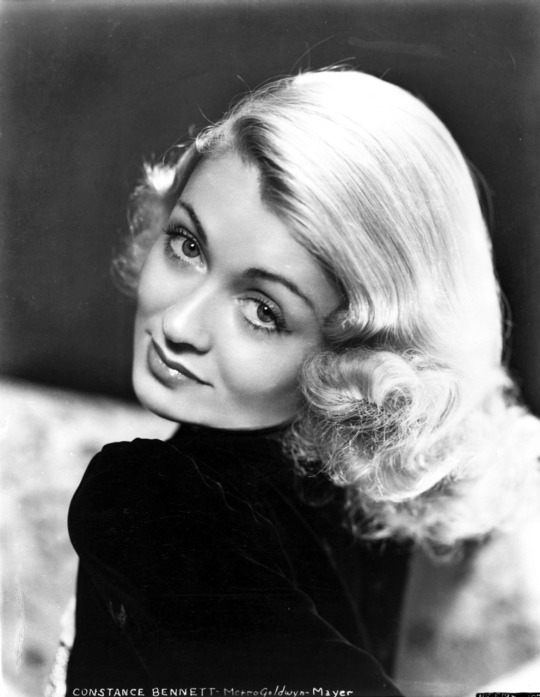
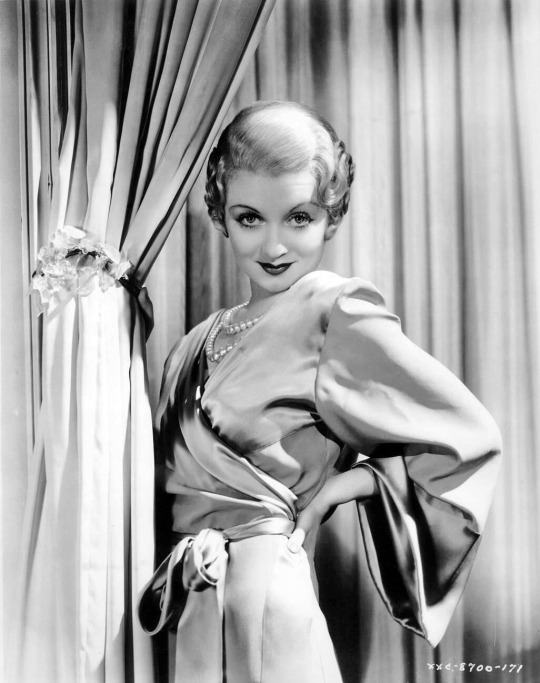
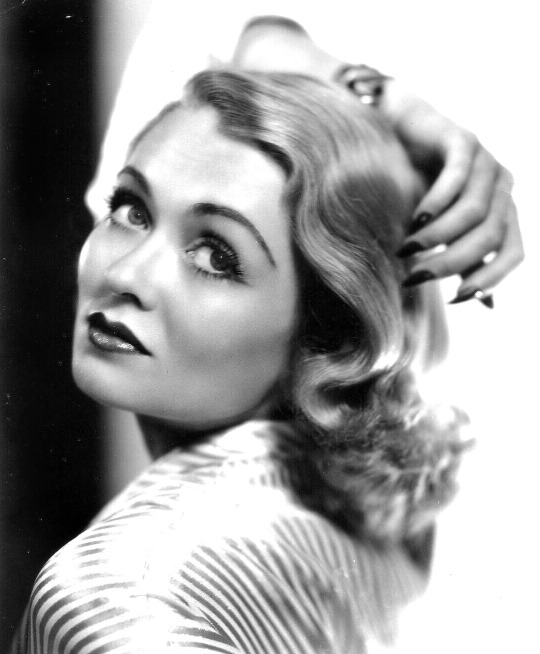
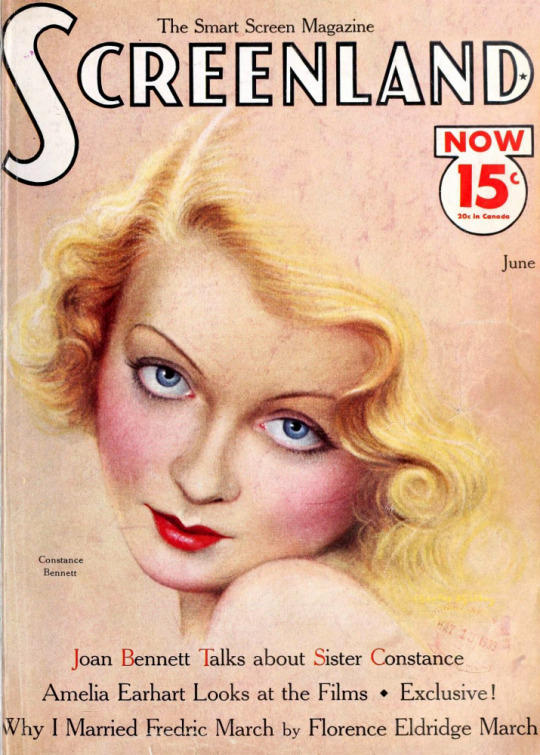
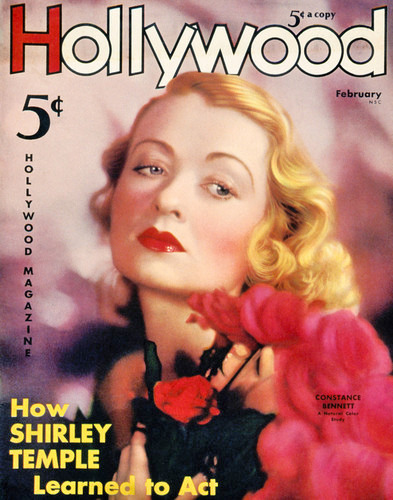
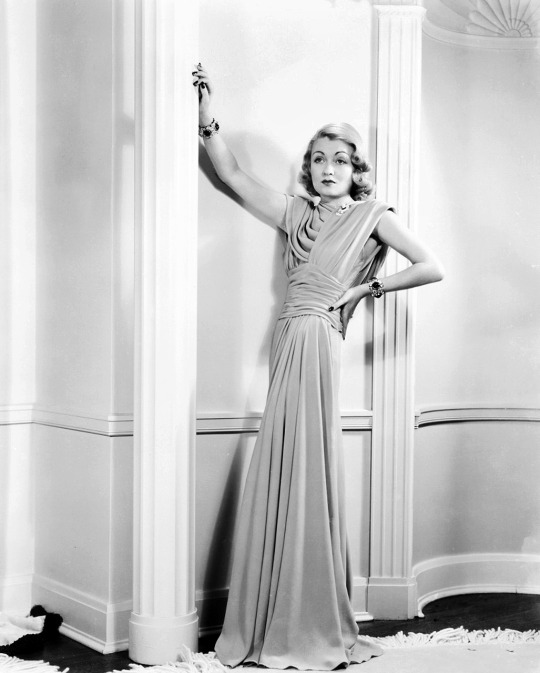
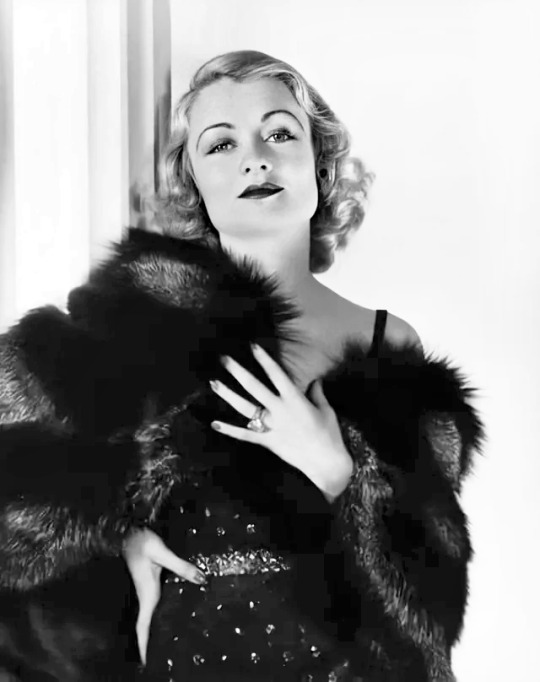
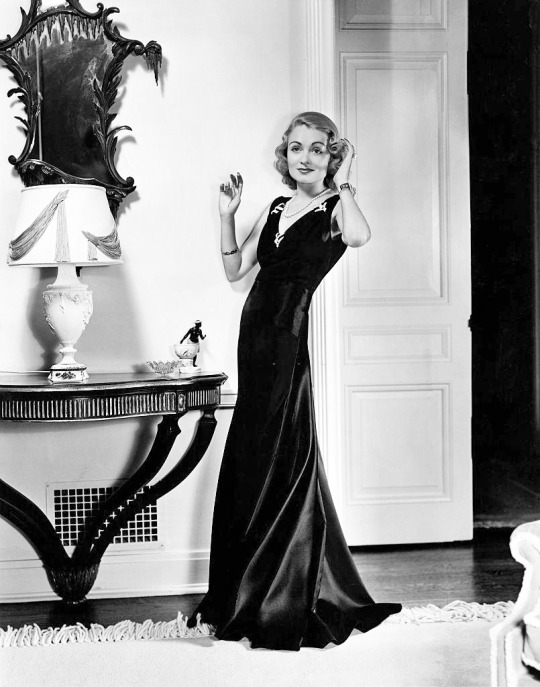




Constance Campbell Bennett (born in New York City on October 22, 1904) was an American actress born to an aristocratic family of actors of English and Spanish ancestry. Blonde, stunning and honey-voiced, she glided through Hollywood with a sprite-like lightness and definite air of style and sophistication, receiving the moniker, "The Hollywood Fox."
The eldest of three daughters of actress Adrienne Morrison and actor Richard Bennett, she attended the Chapin School in New York along with her sisters Joan Bennett and Barbara Bennett, both of whom were actresses.
She was first Bennett sister to enter motion pictures, appearing in New York–produced silent movies before a meeting with Samuel Goldwyn led to her Hollywood debut in 1924. She took a hiatus during a brief marriage, but resumed it after her divorce.
In the early 1930s, Bennett was frequently among the top actresses named in audience popularity and box-office polls due to hits like Topper (1937). Her contracts with Metro-Goldwyn-Mayer, Warner Brothers, and RKO made her a big star in Hollywood, and her cutthroat contract negotiations earned her the sole female spot among Hollywood’s poker-playing elite comprised of top movie moguls.
By the 1940s, Bennett was working less frequently in film but was in demand in both radio and theatre, and she also formed her own production company, Constance Bennett Pictures, which produced two films. Nonetheless, shrewd investments made her a wealthy woman, even founding a cosmetics and clothing company, called "Fashion Focks."
Shortly after Madame X (1966) was completed, Bennett collapsed and died from a cerebral hemorrhage at the age of 60 in Walston Army Hospital at Fort Dix, New Jersey. In recognition of her military contributions, and as the wife of John Theron Coulter, who had achieved the rank of brigadier general, she was buried in Arlington National Cemetery.
Legacy:
Won the Photoplay Awards - Best Performances of the Month in April 1925
Was the highest-paid actress in Hollywood during the early 1930s
Founded the Constance Bennett Cosmetics Company and a clothing company called "Fashion Frocks" in the 1930s
Formed her own production company, Constance Bennett Pictures, which produced two films: Paris Underground (1945) and Smart Woman (1948)
Made smart business investments, including holding stocks in the historic Arrowhead Springs Hotel
Awarded military honors for her role in coordinating shows flown to Europe for occupying troops (1946-48) and the Berlin Airlift (1948-49)
Nominated as the Hall of Fame: Actress Award in the 1978 Photoplay Awards
Has a star on the Hollywood Walk of Fame at 6250 Hollywood Blvd for motion picture

#Constance Bennet#Bennett Sisters#The Hollywood Fox#Silent Films#Silent Era#Silent Film Stars#Golden Age of Hollywood#Classic Hollywood#Film Classics#Old Hollywood#Vintage Hollywood#Hollywood#Movie Star#Hollywood Walk of Fame#Walk of Fame#Movie Legends#hollywood legend#movie stars#1900s#25 Hollywood Legends Born in the 1900s
25 notes
·
View notes